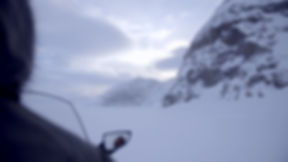
SUMMARY VIDEO
BACKGROUND
An enduring relationship
For millenia, Inuit across Labrador have sustained a deep and enduring connection to caribou. This animal has not only provided physical sustenance for communities, but also supported the continuity of land-based knowledge and culturally important activities, emotional and spiritual wellbeing, social connections within and between communities, and a range of other aspects of Inuit life.



A steep decline
The George River Caribou Herd is one of several herds inhabiting Labrador. Between the 1950s and 1990s, this herd grew from about 15,000 animals to a population with more than 800,000, and in the 1990s it was considered among the largest caribou herds in the world. However, since this time, the herd has declined by more than 99%, and is now estimated be around 8,000 animals. Although caribou populations worldwide have historically gone through natural population cycles, the exact reasons for the current declines are complex, multifaceted, and not well understood. To learn more about caribou population cycles in Labrador and elsewhere, check out some of the resources below.
A hunting ban
To prevent further decline of the caribou, the Government of Newfoundland and Labrador issued a total hunting ban on all caribou in 2013, which continues today. This ban builds on previously established hunting bans in Labrador, such as a moratorium placed in the 1960s on the Mealy Mountain Caribou herd. Since 2013, Inuit and other Indigenous groups have been prohibited from hunting caribou.

Inuit voices
In response to the caribou population declines and hunting ban, Inuit from the Nunatsiavut and NunatuKavut regions identified the need to further understand how Inuit are being impacted by, and are coping with, caribou-related change from a health and wellbeing lens. It was also recognized that further research must come from Inuit voices, be undertaken in collaboration with community members, and leverage the strengths of documentary film for communicating to a variety of audiences. From these discussions, it was clear that a research project and team needed to be organized to support the successful development and implementation of a study that centered the creation of a research-based documentary, and push the boundaries at the intersection of documentary film and research. This study would come to be called HERD: Inuit Voices on Caribou (or, the HERD project).
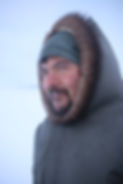

The HERD Project
Amplifying Inuit voices
HERD: Inuit Voices on Caribou, tells the story of Inuit connections with caribou in the Nunatsiavut and NunatuKavut regions of Labrador, Canada. Through Inuit leadership, we are using visual media as a way to document, analyze, and share Inuit voices with caribou so that this information can be preserved for future generations. So far, 85 Inuit from 11 communities have taken part in this work. This project stands as an emotional, audio-visual, qualitative repository that highlights Inuit feelings and experiences of loss and distress associated with caribou declines; shares outlooks and actions of strength, hope, and resilience; and illustrates the need for Inuit leadership and guidance in caribou conservation and management.
At it’s core, HERD is about collaboration and partnership, bringing a diversity of life experiences and backgrounds together to share the story of Inuit and caribou in Labrador. Both Inuit and non-Inuit came together from different regions, disciplines, professions, and knowledge systems, with the intention of creating this film through a reciprocal and collective process that would resonate with Inuit experiences. A Caribou Project Steering Committee was formed with members from communities, the Nunatsiavut Government, NunuatuKavut Community Council, the Torngat Wildlife and Plants Co-management Board, and multiple academic institutions. It was our collective vision to support Inuit storytelling values and traditions, and consistently engage Inuit knowledge holders in the making of the film. Community members supported in filming caribou, people, their communities and lands. We were able to hear from and involve over 80 Inuit from across Labrador through community knowledge-sharing events, summary videos, personalized links with draft versions of the film, and casual phone calls, texts, and Facebook messaging. Their voices, wisdom, and feedback strengthened the film in fundamental ways, ensuring the deep connections between Inuit and caribou were accurately portrayed. We believe this collective filmmaking process is a core part of reconciliation, of supporting Inuit self-representation, and celebrating Inuit self-determination and control over their knowledge, wildlife, and stories.
Co-creation Process

Behind-the-Scenes

THE TEAM

David Borish
Director/Producer
David Borish is a social and health researcher and visual artist pushing the boundaries of using audio-visual methodologies to explore and understand relationships between humans and the environment. His work sits at the interface of documentary film, public health, cultural and social wellbeing, wildlife conservation, and audio-visual research methods. To create this film together, Borish worked in alongside a Caribou Project Steering Committee with experts and leaders from different sectors, disciplines, and knowledge systems, as well as over 80 Inuit from the Nunatsiavut and NunatuKavut regions. Previously, he has worked in partnership with Indigenous Peoples in Peru, Uganda, Malaysia, Nepal, and elsewhere to co-create visual stories relating to environmental and social issues. Through film, photography, articles, and creative audio-visual and qualitative strategies, his work is centered around producing both research and storytelling outputs that can be used to inform multiple and diverse audiences within and outside of academia.
Ashlee Cunsolo
Producer
Dr. Ashlee Cunsolo is the Founding Dean of the School of Arctic and Subarctic Studies and the Labrador Campus of Memorial University, and an international climate change and health research leader, particularly in the areas of climate change and mental health, and ecological grief and anxiety. As both an administrative and research leader, Dr. Cunsolo emphasizes Northern and Arctic research and education sovereignty and self-determination. In her role as Founding Dean of the Labrador Campus, Dr. Cunsolo works with multiple partners in Labrador and at Memorial University to lead the development of a brand new Northern-led and Northern-focused Campus and academic unit, including creating undergraduate, graduate, and professional learning programs, expanding Northern and Indigenous-led research, and growing infrastructure. She also leads and oversee the Pye Centre for Northern Boreal Food Systems, a new 80-acre research, education, and experimental farm focused on enhancing and expanding Northern food bases, food security, and food sovereignty in Labrador. As a researcher, Dr. Cunsolo has been working for 15 years on community-based and community-led climate change and health research in the North and internationally. She is a former Canada Research Chair (Tier II), and a Member Emeritus of the Royal Society of Canada College of New Scholars, Artists, and Scientists, living and working on the homelands of the Innu and Inuit in Happy Valley-Goose Bay, Labrador

Photo: John Gaudi

Sherilee L. Harper
Producer
Sherilee L. Harper is a Canada Research Chair in Climate Change and Health and an Associate Professor in the School of Public Health at the University of Alberta. Her research investigates associations between weather, environment, and public health in the context of climate change, and she collaborates with partners across sectors to prioritise climate-related health actions, planning, interventions, and research.
She is a Lead Author on the Intergovernmental Panel on Climate Change (IPCC) Special Report on the Ocean and Cryosphere in a Changing Climate (SROCC); Lead Author on the IPCC’s Sixth Assessment Report (AR6-WG2); served on the Gender Task Group for the IPCC; and serves on the Editorial Board of Epidemiology and Infection, PLOS Climate, and Frontiers in Climate.
Inez Shiwak
Co-Producer
Inez Shiwak is from Rigolet, Nunatsiavut, and an Inuit Tapiriit Kanatami Inuit Recognition Award recipient with over 10 years of experience in digital media research and coordination, including regional digital storytelling projects and oral history projects.
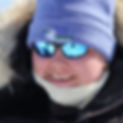


Jamie Snook
Co-Producer
Jamie Snook is an Inuk from Mary’s Harbour, Labrador, within the NunatuKavut Community Council territory. For the past 12 years, Jamie has been extensively involved in wildlife research and public policy as the Executive Director for the Torngat Wildlife Plants and Fisheries Secretariat. During this time, Jamie has been involved in projects focused on boreal, barren ground, and mountain caribou in the region. Jamie is a Ph.D. candidate in Public Health at the University of Guelph and a Pierre Elliott Trudeau Foundation Scholar.
Michele Wood
Co-Producer
Michele Wood is a researcher in the Department of Health and Social Development for the Nunatsiavut Government. She is an Inuit Tapiriit Kanatami Inuit Recognition Award recipient, bringing expertise in Inuit governance, health and wellbeing, and social development. Caribou has always been a staple growing up and some of her favorite memories were of watching her Grandmother make pan-fried caribou ringalls; eating finely slivered caribou and gravy with homemade bread; and rich, silky marrow and root vegetable stew. The dishes were always family-centered and shared with anyone visiting. Some of her best memories revolve around her grandparents and many of them were intertwined with caribou.

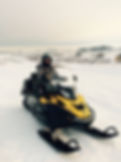
Amy Hudson
Co-Producer
Amy Hudson was born and raised in Black Tickle, a remote island community off the southeast coast of Labrador in NunatuKavut, the traditional homeland of Inuit from this region. Amy works with NunatuKavut Community Council (NCC) in Happy Valley-Goose Bay as Governance and Strategic Planning Lead and researcher. Amy’s approach to research highly regards the preservation and survival of Indigenous communities and culture with a view towards resurgence, reclamation and self-determination. She is also a negotiator with NCC, where she works to advance Indigenous rights through the Recognition of Indigenous Rights and Self-Determination (RIRSD) Process.

Charlene Kippenhuck
Co-Producer
Charlene is a manager for the Department of Environment and Natural Resources for the NunatuKavut Community Council.



Aaron Dale
Co-Producer
Aaron Dale is Senior Policy Analyst with the Torngat Wildlife, Plants and Fisheries Secretariat, which serves the Torngat Wildlife and Plants Co-Management Board and the Torngat Joint Fisheries Board. Working closely with colleagues and partners, Aaron focuses on the interface of knowledge and action, bringing research and dialogue to bear on transparent analysis of policy alternatives.
Charlie Flowers
Co-Producer
I have lots of wonderful memories of caribou, from hearing stories from my Dad/Grandfather of caribou, to eating many wonderful meals made of the meat. I was even lucky enough to participate in a couple of caribou hunts before the ban. But my favourite memory was one summer when we were at our fishing cabin. I happened to wake up really early in the morning and looked out the front window. I saw a dark shape out in the water, and when I put my glasses on I could see it was a young caribou swimming toward the shore (just around a small point near our cabin). I put on my rubber boots and went outside and walked to the point that I had just seen the caribou swim around. As I looked over the little hill I saw the caribou shaking the water out of his fur. I was pretty close to him by the time he glanced my way and realized I was there. He gave a snort and turned back around, jumped into the water, and swam further down the shore out of sight. It was the first time I had been so close to a caribou without them knowing I was there, and it was neat just to stand there and watch him do his thing.

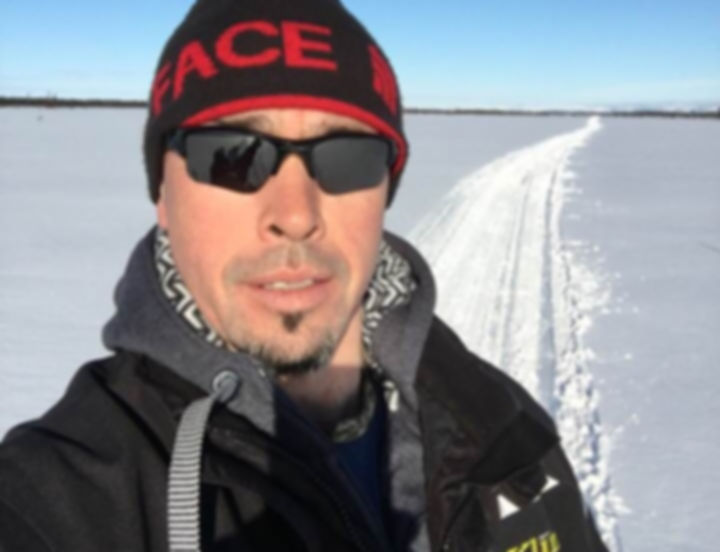

George Russell Jr.
Co-Producer
George is the director for the Department of Environment and Natural Resources for the NunatuKavut Community Council.
Joseph Townley
Co-Producer
Joseph Townley is the Wildlife Stewardship Facilitator with the Nunatsiavut Government since 2019 and before this was a conservation officer with the Nunatsiavut Government from 2009 -2019. I remember eating caribou meat at home at least 5-6 times per week, I use to get sick of eating it we ate so much wondering when we will have something different for supper. Now you can't have a meal when you want it you realize how much you miss it, from preparing for the hunt to setting up camp, getting stuck, skinning the caribou, giving the meat out and seeing all the happy faces, the people you would meet up with while hunting, all the stories you heard along the way. We use to commercial hunt caribou for the local butcher here in Goose Bay. The number of caribou you had seen on the land seemed like there was an endless supply, little did we realize it would soon all be over, and our lives changed in the blink of an eye.
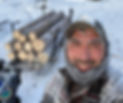

Meredith Purcell
Co-Producer
Meredith is the wildlife analyst for Torngat Wildlife, Plants and Fisheries Secretariat. She works alongside partners to develop and implement monitoring programs that are prioritized by the Torngat Wildlife and Plants Co-Management Board. Results from this work aim to contribute to a better understanding of the status of wildlife populations in Nunatsiavut. She also works closely with partners to develop stewardship, educational, and outreach programming across the region.
